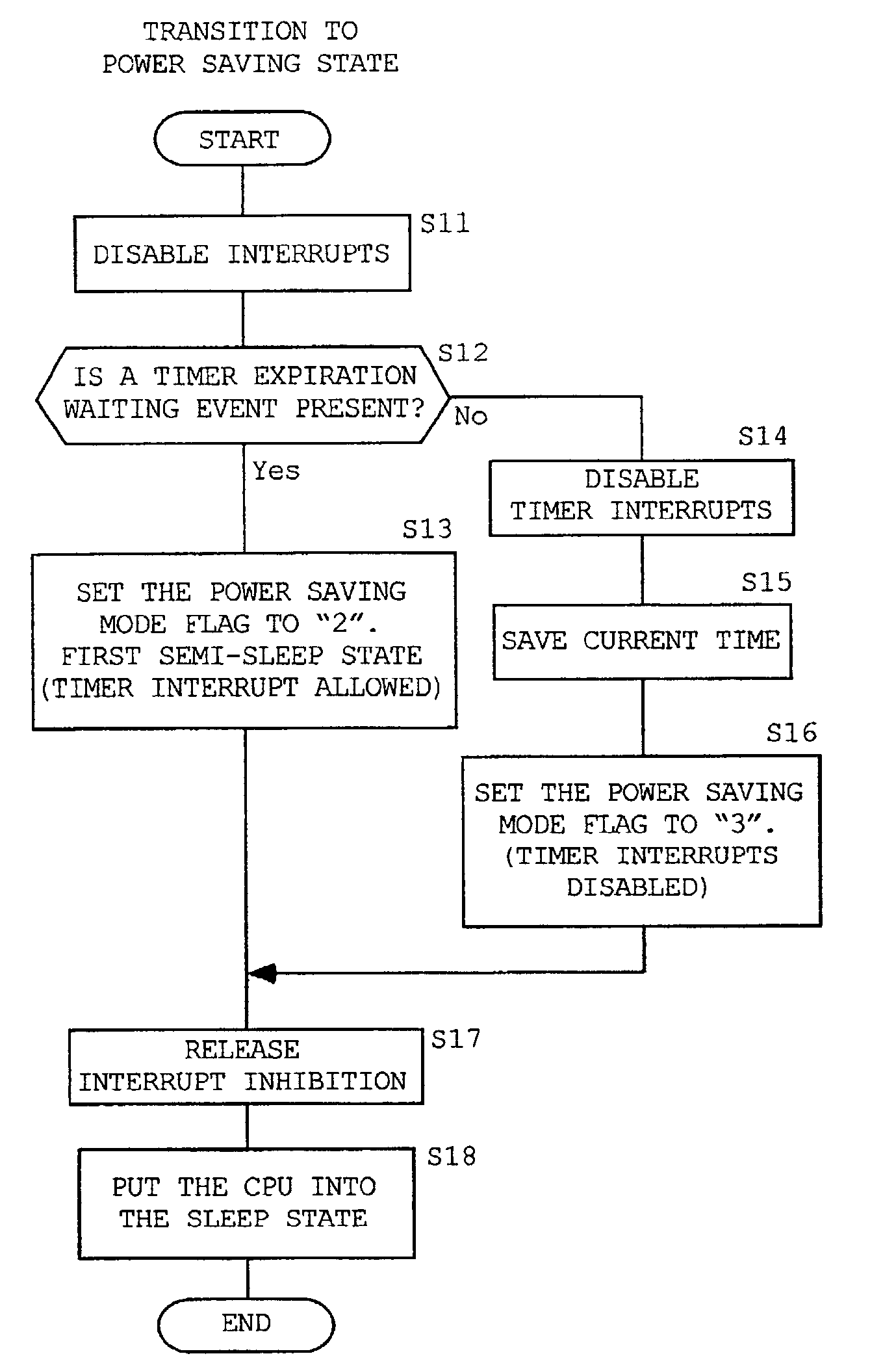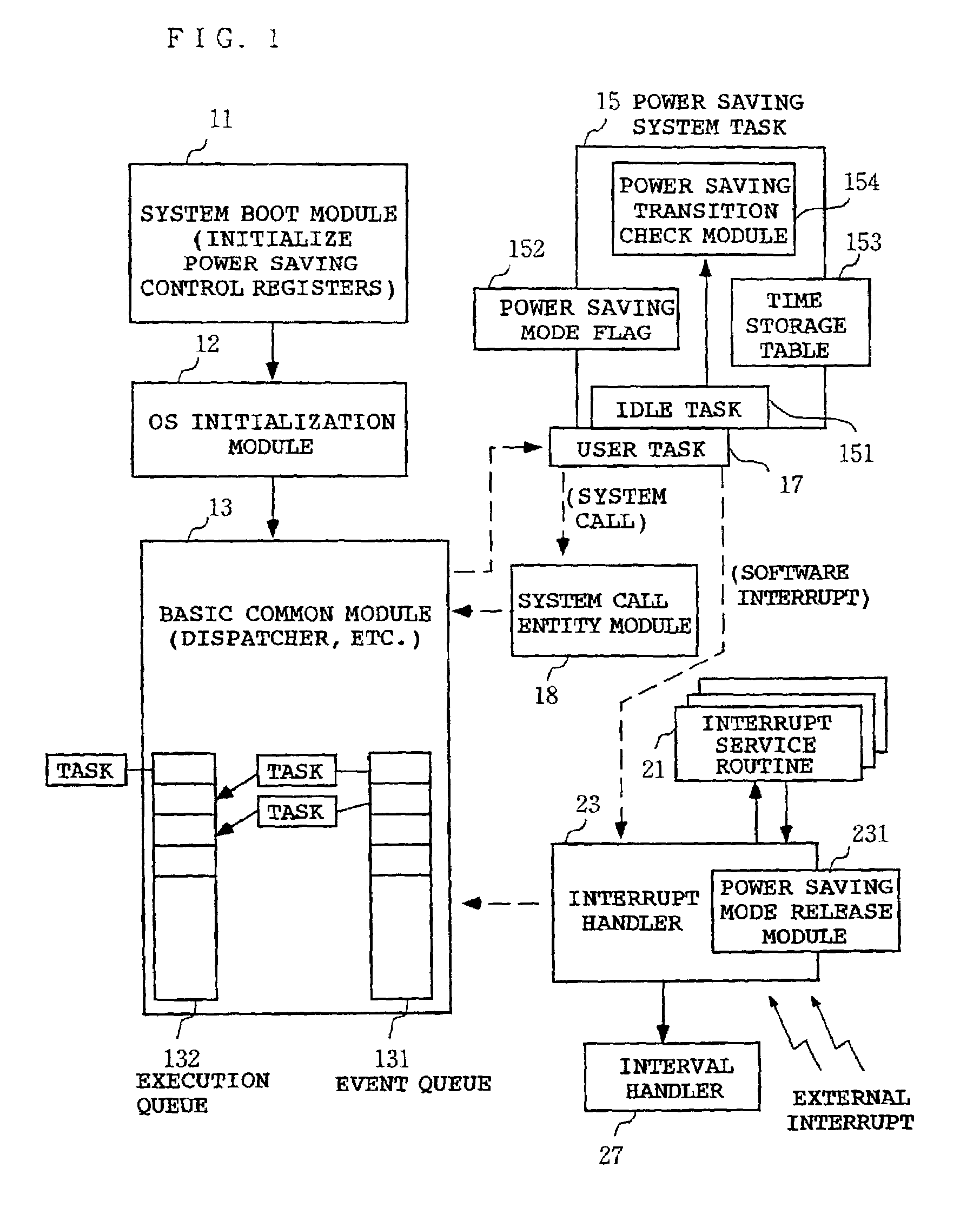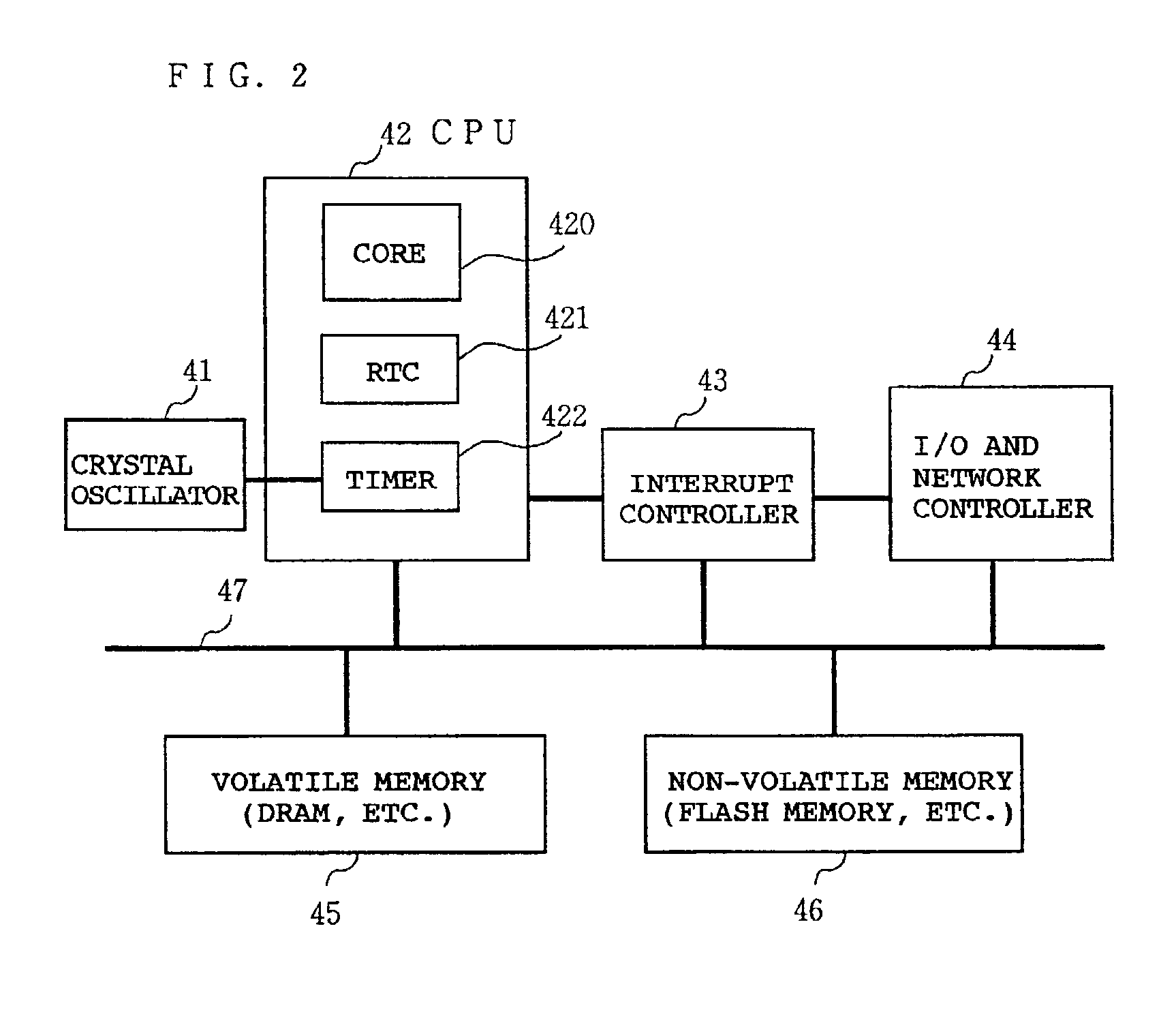System and method for switching a computer system to a first or second power saving mode based on whether or not there exists a timer-expiration-waiting event in an event queue
- Summary
- Abstract
- Description
- Claims
- Application Information
AI Technical Summary
Benefits of technology
Problems solved by technology
Method used
Image
Examples
Embodiment Construction
[0021]A preferred embodiment of the present invention will be described in detail below with reference to the attached drawings.
[0022]FIG. 1 shows the software configuration of a computer system that implements power saving according to the present invention. This power saving function is implemented by a real time OS. The computer system to which the present invention is applied is preferably a battery-powered portable data processing device (cellular phone, PDA, notebook personal computer, and so on). The present invention may also be applied to power-saving intended FA / OA devices, such as a printer, a copier, a facsimile machine, etc.
[0023]Referring to FIG. 1, a system boot module 11 primarily initializes the hardware; for example, it sets initial values in control registers used to control the operation frequency (internal clock) of a CPU (Central Processing Unit) and to control a system bus, memory, and so on. In this embodiment, the system boot module also initializes the cont...
PUM
 Login to View More
Login to View More Abstract
Description
Claims
Application Information
 Login to View More
Login to View More - R&D
- Intellectual Property
- Life Sciences
- Materials
- Tech Scout
- Unparalleled Data Quality
- Higher Quality Content
- 60% Fewer Hallucinations
Browse by: Latest US Patents, China's latest patents, Technical Efficacy Thesaurus, Application Domain, Technology Topic, Popular Technical Reports.
© 2025 PatSnap. All rights reserved.Legal|Privacy policy|Modern Slavery Act Transparency Statement|Sitemap|About US| Contact US: help@patsnap.com



